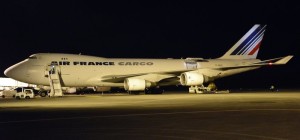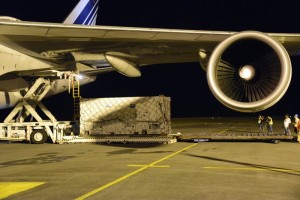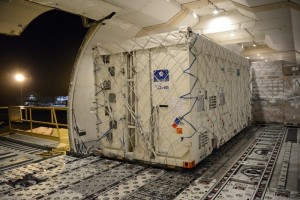The seventh and eighth Galileo satellites arrived on 05-February to French Guiana, safely cocooned inside their air-conditioned containers inside an Air France Boeing 747, to be launched together by Soyuz on 27th March.
Arrival in French Guiana is the final stop in a complex production and test line that snakes back across Europe. The satellites are built by OHB in Bremen, Germany, with their navigation payloads coming from Surrey Satellite Technology Ltd in Guildford, UK, both companies being supplied in turn by subcontractors across much of the continent.
The complete satellites are then delivered to ESA’s ESTEC technical centre in Noordwijk, the Netherlands, home to Europe’s largest satellite test centre. There, a series of tests reproduces every aspect of the space environment, including acoustic noise and thermal vacuum simulations, to ensure their readiness for space. Each satellite is also plugged into the entire worldwide Galileo ground network for days on end to check it works as planned.
Once in Kourou, Arianespace has confirmed the “fit” for the Soyuz launch in March, having made initial contact with the mission’s dual-payload dispenser in French Guiana.
The fit check was completed over a two-day period inside the Spaceport’s S1A payload preparation building. The two satellites were installed separately, with the Flight Model #3 (FM3) spacecraft integrated on – and subsequently removed from – the dispenser on Monday. Flight Model #4 (FM4) underwent the same process the following day.
The payload dispenser for Galileo was developed by RUAG Space Sweden for Arianespace, and carries one satellite on each side. It will deploy the spacecraft during their Soyuz launch by firing a pyrotechnic separation system to release them in opposite directions at the orbital insertion point.



